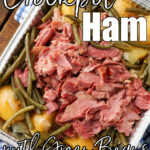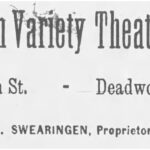Like many enthusiasts, I’ve always been captivated by the elegance of Victorian gowns, dreaming of a time filled with layers of fabric, rich colors, delicate ribbons, and an undeniable sense of refinement. As a woman deeply rooted in the American Southwest – an Arizona native and Daughter of Utah Pioneers now residing in Denver – this fascination has naturally led me to consider pioneer clothing. Specifically, I’ve been pondering how the fashions of the Western frontier diverged from the established styles of Eastern cities during the same era.
Pioneer women faced a unique set of considerations when it came to their wardrobes. From practicality to social decorum, and everything in between, I’ve begun to explore the fundamentals of their clothing. This post will delve into some of the basics I’ve uncovered, setting the stage for a deeper dive into my ongoing research. I hope you enjoy this exploration of Pioneer Apparel!
Defining the Frontier Era for Pioneer Apparel
For the scope of this discussion on pioneer apparel, we will focus on women’s clothing in the regions west of Missouri and Arkansas, roughly between 1850 and 1890. The fashions and wardrobes described generally pertain to female homesteaders and members of burgeoning settlement communities. Furthermore, our primary focus will be on the experiences of white settlers journeying westward from the East.
What I find particularly compelling about pioneer apparel is its shift in emphasis. Clothing in this context was less about displaying social status or purchasing power, and more about the shared experience and aspirations of families pursuing their dreams in the uncharted territories of the West. It was a time where necessity and community spirit shaped fashion choices more than fleeting trends.
Essential Undergarments of Pioneer Women’s Apparel
Interestingly, the foundation garments worn by women in frontier areas were not drastically different from the underclothes popular in eastern cities. The cornerstone undergarment was the chemise, a lightweight cotton slip. Its primary function was hygiene, and it was laundered frequently to maintain cleanliness. Next came pantalets, typically crafted from flannel or cotton, worn for modesty. It’s worth noting that “panties” as we know them today were not yet a common garment.
Contrary to some assumptions about pioneer apparel being purely utilitarian, most frontier women included a corset as part of their ensemble, worn over the chemise and pantalets. It’s important to remember that many women ventured west driven by the hope of a better future for their families, whether for economic opportunities or religious freedom. These were “proper,” respectable women who largely maintained the societal norms of the time, including the wearing of corsets, considered fundamental to proper attire.
While women engaged in strenuous labor might loosen their corsets or even forgo them while tackling household chores, the majority of women on the frontier brought corsets with them and wore them as often as circumstances allowed.
Following the corset came petticoats, a garment with considerable personal appeal. Similar to their dresses, many women owned multiple petticoats, selecting them based on the formality of the occasion and the prevailing weather conditions. Stockings were essential whenever leaving the house or receiving visitors. Historical accounts suggest these were held up by garters or tucked into pantalets – a detail that personally strikes me as the most impractical and uncomfortable aspect of pioneer apparel.
Fabrics and Materials in Pioneer Apparel
Across all types of pioneer apparel, calico emerged as the predominant fabric choice. While often visualized as quaint floral prints adorning pioneer dresses, calico is actually a type of fabric made from unprocessed cotton. It features a plain weave and is slightly lighter in weight than modern canvas. This made it an ideal material for the active lifestyle of the frontier, being lightweight, durable, and easy to clean. General stores offered calico in various dyed options, but women also commonly dyed the fabric themselves using commercially available dyes or natural pigments derived from local leaves, bark, berries, or fruits.
Cotton and silk fabrics were still reserved for “Sunday best” and more formal “going out” dresses. Many women included such garments when packing for their westward journey, recognizing their importance for social and religious occasions even in the frontier setting.
Fabrics, by this period, were generally available at general stores. However, access to these stores varied greatly depending on the remoteness of a family’s location. For families with limited access to purchased fabrics, creating homespun textiles was a necessity, though this intricate process is a topic deserving of its own dedicated exploration.
Daily Pioneer Apparel: Practicality Meets Style
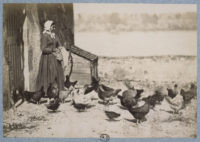
Regardless of their social background in the East, women in frontier settlements were integral to the establishment and maintenance of homes and farms. Their days were filled with essential tasks: cooking, cleaning, childcare, laundry, and often, agricultural work in the fields. Popular culture often depicts them baking countless pies, and while perhaps an exaggeration, it underscores the domestic workload. The success of family farms and ventures relied heavily on the physical contributions of every member, with no possibility of outsourcing domestic labor. A daily routine of manual labor became the norm for pioneer women, and adaptation was swift and necessary.
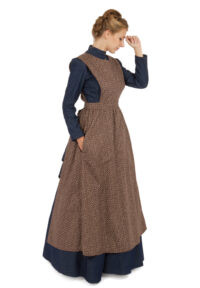 Pioneer Calico Apron
Pioneer Calico Apron
The general dress silhouettes popular across the country at the time, characterized by fitted bodices and voluminous skirts, were also adopted into pioneer apparel. However, practical modifications were essential to accommodate the demands of frontier life. For everyday dresses, skirts were hemmed approximately three inches shorter, enhancing mobility for daily tasks. It is also thought that weights were sometimes sewn into the hems to prevent skirts from immodestly blowing in windy conditions.
While bodices remained fitted, sleeves were made looser and extended to the wrists, paired with high collars to provide crucial protection from the sun’s harsh rays.
Laundering pioneer apparel was a significant undertaking, a task women had to manage regardless of their prior experience with domestic chores. An intriguing reference to “wash dresses” appears in Chris Enss’s book, How the West Was Worn. It describes a popular two-piece dress of white cotton with a printed design that emerged in 1867. Its appeal lay in its easy care, making it commercially successful and widely replicated by seamstresses throughout the West. Known as the “wash dress,” it was valued for its launderability and worn by women across various socioeconomic backgrounds. While further research into the “wash dress” is warranted, its emergence underscores how fashion adapted to the practical needs of families living in the West.
Sunday Best Pioneer Apparel: Church and Community

Even as families settled on remote lands, often living in isolation for extended periods, communities frequently established churches. Regular church attendance became an unspoken social expectation within these settlements. While accounts exist of women in impoverished communities arriving barefoot to church, it was more common for women to possess one or two dresses specifically reserved for Sundays. However, historical records tend to be skewed towards more privileged settlers, making it challenging to definitively ascertain the most prevalent reality.
“Sunday best” pioneer apparel mirrored the fashionable styles of women in eastern cities to a remarkable degree. Full skirts, supported by petticoats and corsets, were standard. Sleeve styles of the era, including bell, leg-o-mutton, or pagoda sleeves, were also incorporated. Depending on the decade, the latest skirt silhouettes, whether crinoline, hoop, or bustle, would likely have been adopted for Sunday attire.
Color choices reflected age and marital status. Younger women and newlyweds favored lighter hues, transitioning to darker colors as they matured. Sunday ensembles were completed with the most fashionable hats available, along with kid gloves and low-heeled boots, striving for an air of refined respectability even on the frontier.
Social Pioneer Apparel: Dressing for Gatherings
When resources permitted, pioneer women, beyond their daily wear and Sunday dresses, would have a designated dress for social occasions. Dances, holiday celebrations, picnics, and various community gatherings were important opportunities for socializing, and much like in eastern cities, women were accustomed to dressing appropriately for these events.
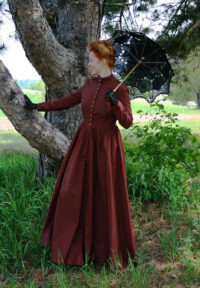 Mary Chestnut’s Americana Victorian Cotton Dress
Mary Chestnut’s Americana Victorian Cotton Dress
These social dresses were highly valued. Women might order fabrics from the general store and eagerly anticipate the chance to create the latest fashions. Research consistently points to Godey’s Ladies Book as a significant influence. It was often circulated amongst women on the frontier, who enthusiastically copied dress patterns and styles featured in its pages.
The availability of materials for creating new dresses depended heavily on the distance to towns and the presence of a well-stocked general store. In many instances, women might not own a wide selection of dresses. In such cases, their finest dress would serve for special events, enhanced with embellishments to elevate the ensemble. Accessories like hand-crocheted collars and shawls were popular choices, along with a variety of other finishing touches, which we will explore further.
Accessories: The Finishing Touches of Pioneer Apparel
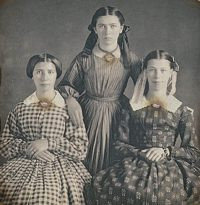
One significant discovery in researching pioneer apparel was the crucial role of accessories. While hoop skirts and calico dresses are often the first images that come to mind, the finishing touches were undeniably important! Emphasis on jewelry and accessories was a recurring theme in my research, leading me to compile a list and plan a future post dedicated to exploring each item in greater detail.
Women on the frontier enjoyed accessorizing with:
- Aprons
- Boots
- Brooches
- Lockets
- Earrings
- Precious stones and metals
- Hair adornments
- Hats
- Collars and cuffs
- Gloves
- Undersleeves
- Parasols
- Fans
- Handbags
- Shawls
A Surviving Legacy
My growing interest in my own pioneer ancestors has become a truly captivating pursuit. As I embarked on writing this post about pioneer apparel, I realized that while “prairie style,” “pioneer,” and “western wear” clothing are readily available commercially, detailed historical information about how women of this era and place balanced propriety, beauty, and fashion within the demanding realities of frontier life is less common.
This topic holds continued fascination for me, and I look forward to further exploration. I hope you will join me for my upcoming post focusing on the accessories that completed the pioneer apparel of women on the frontier.
Create your own pioneer look:
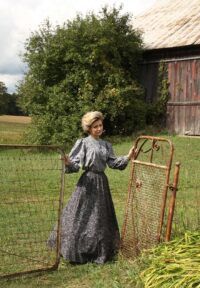 Woman in pioneer clothing standing in a field wearing a long-sleeved blue top and long blue skirt.
Woman in pioneer clothing standing in a field wearing a long-sleeved blue top and long blue skirt.
Browse our entire pioneer clothing collection
Pioneer Calico Blouse and Skirt
Harper Victorian Pioneer Dress
Pioneer Blouse, Apron and Skirt

